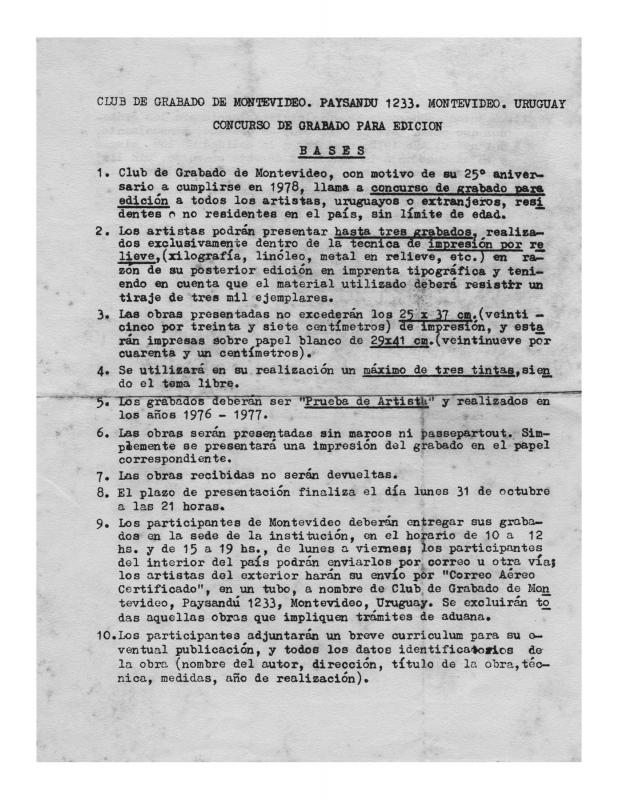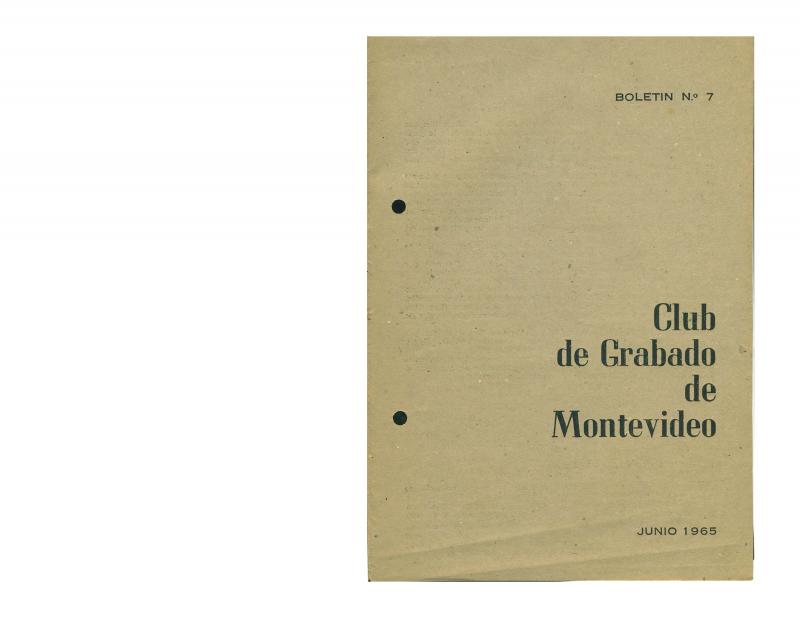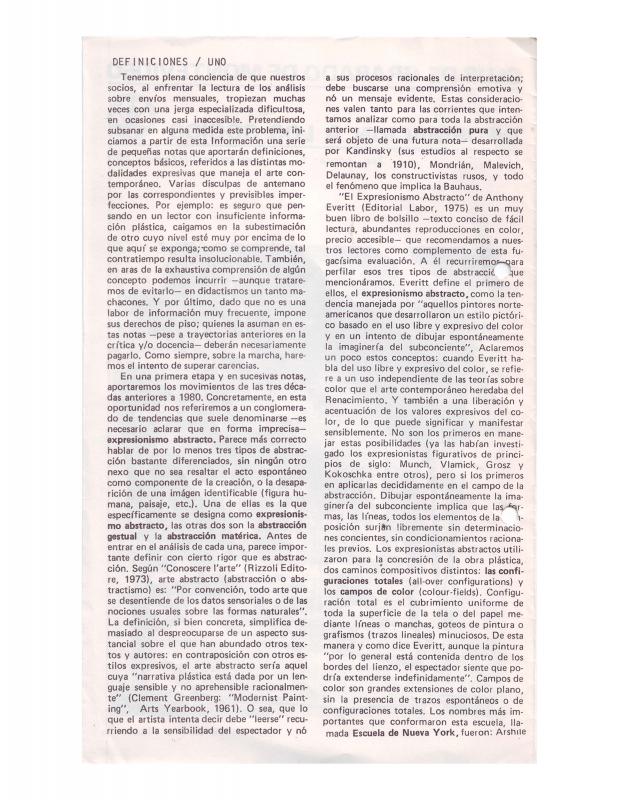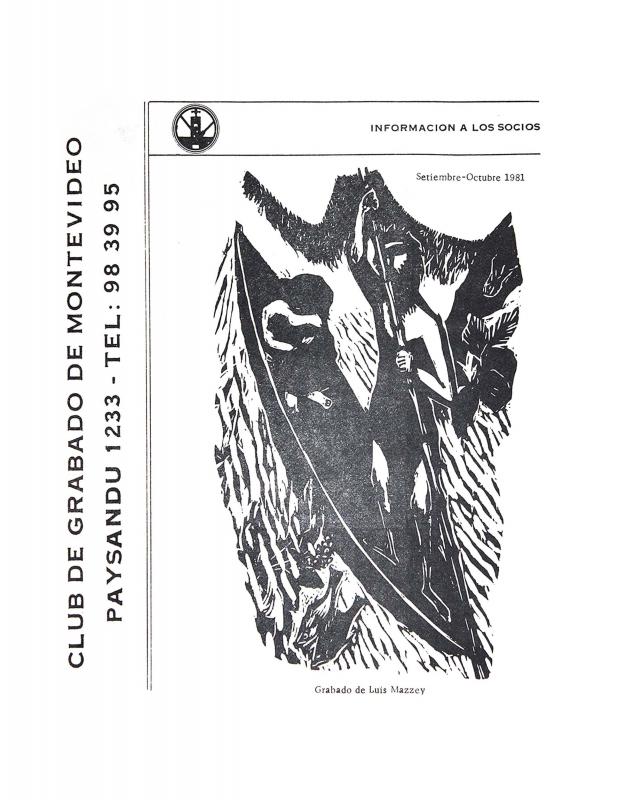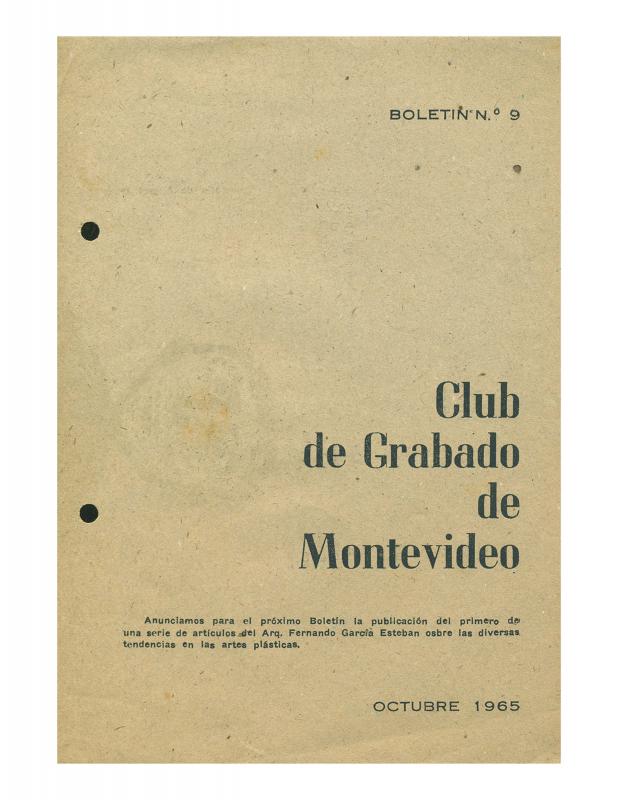This article was written at a time of profound changes for the CGM (Club de Grabado de Montevideo), one of the only institutions devoted to art instruction and practice that managed to survive the dictatorship and maintain its program of work and theoretical discussion. Membership dropped to its lowest point during those years, a direct result of the changes in the nature of the CGM’s graphic production and the inhibiting influence of the coup d’état of 1973.
Olga Larnaudie (b. 1941), an architect and art critic who was also a member of the Club de Grabado de Montevideo, begins her essay by quoting from two critical articles, one by Tomás Maldonado (b. 1922) and the other by René Berger (1915–2009). Both these articles discuss the situation facing the visual arts in Uruguay at the time, and encourage readers to think deeply about the subject and decide where they stand on the issues addressed by the two writers. After reviewing the work of several generations of visual artists, Larnaudie states that, though it is clear that there are deficiencies in terms of the current period, contemporary art should take into account the changed circumstances following the years of the dictatorship. She believes that artists should therefore be seen as “fighters” and as “survivors” of that particular historical experience.
[As complementary reading see, in the ICAA digital archive, the following articles published by the Club de Grabado de Montevideo: “Concurso de grabado para edición” (doc. no. 863481); “13 años de actividad de Club de Grabado de Montevideo” (doc. no. 1183571); “El arte correo en el Uruguay” (doc. no. 1191850); “Boletín N° 7 Club de Grabado de Montevideo” (doc. no. 1182833); “Club de Grabado compra su casa” (doc. no. 1192649); “Club de Grabado de Montevideo 22 Aniversario 1953 - Agosto 1975” (doc. no. 1183514); “Club de Grabado de Montevideo a la población de Montevideo” (doc. no. 1183124); “Cuando el Tercer Mundo se mira a sí mismo. II Bienal de La Habana” (doc. no. 1184459); “De los grabados de ayer a las ediciones actuales” (doc. no. 1191787); “Definiciones / Uno” (doc. no. 1189065); “Entrevista a Luis Mazzey” (doc. no. 1186991); “Entrevista a Óscar Ferrando” (doc. no. 1186747); “Entrevista a Óscar Ferrando [segunda parte]” (doc. no. 1186802); “Fundamentos a propósito de su 22 aniversario” (doc. no. 1182640); “Mini Grabado Internacional de Cadaqués. España” (doc. no. 1191135); “La necesidad de la imaginación” (doc. no. 1190793); “Nuestra institución” (doc. no. 1182010); “Los nuevos movimientos de las artes” (doc. no. 1182868); “Opiniones (I)” (doc. no. 1185411); “Palabras de clausura para un año de apertura” (doc. no. 1191167); “Referencias sobre identidad, cultura y arte en Latinoamérica” (doc. no. 1183641); “Reflexiones en torno a la supuesta crisis de las artes plásticas” (doc. no. 1185539); and “Sobre el papel de la crítica” (doc. no. 1187071)].

